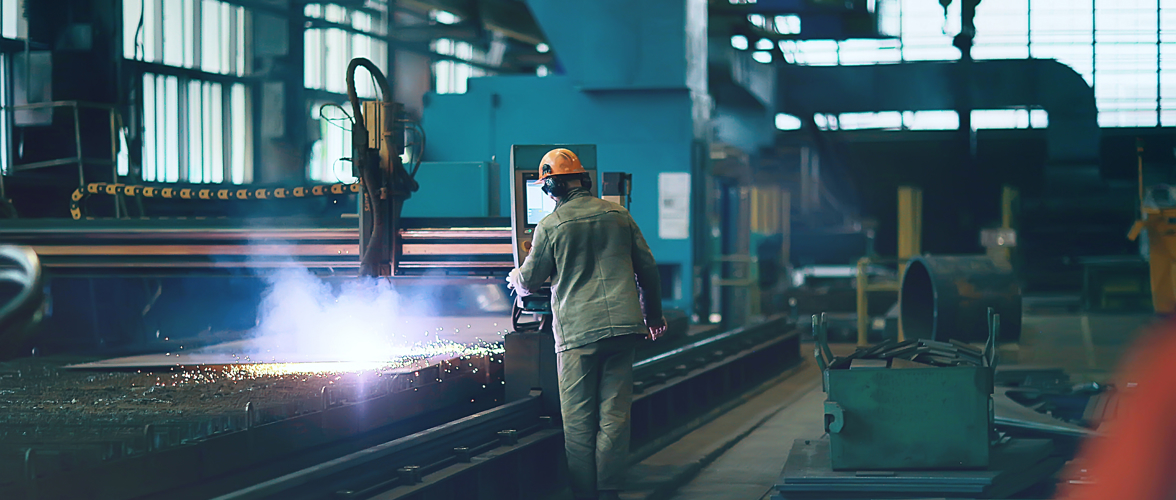Key Takeaways
- An unprecedented patent cliff occurring over the next decade exposes the largest multinational pharmaceutical manufacturers to massive revenue losses.
- Losing exclusivity pressures pharmaceutical manufacturers to proactively focus on medical advances and innovative tools to secure new, long-term growth.
- Weaknesses in the global pharmaceutical supply chain are hurting manufacturers' ability to get critical medicines to patients needing them.
Pharmaceutical manufacturers' benefit to global health has always been evident, but recent breakthroughs in technology and medicine are paving the way for a new era of innovation. Innovative medical advances create tremendous opportunities for revenue while delivering transformative impacts on patient care, encapsulating areas ranging from cancer treatments to Alzheimer's and immunology.
But innovation doesn't happen in isolation. Pharmaceutical manufacturers globally have become more entwined than ever, with everything from funding environments to clinical trials closely overlapping. This has been necessary to meet an expanding global demand for medicines – an outcome of an aging population, higher rates of chronic illness, tech advances and economic growth. Increasing globalization has drawbacks; a more global industry fosters volatility, where one country's policy, pricing or regulatory actions send a ripple effect through another.
All of this is happening while multinational pharma companies confront an upcoming patent cliff, where they'll watch billions in revenue fall off the edge. Meeting this moment will require new investments in R&D and innovation, but the advent of groundbreaking technologies and artificial intelligence pushes pharma producers to revamp strategies. Strong external headwinds, like high interest rates, geopolitical tensions and inflation, complicate this further. Understanding these current challenges and opportunities is paramount for pharmaceutical manufacturers.
Current state of global pharmaceuticals
Advances in drug development, aging populations and expanding access to healthcare worldwide have pushed revenue for global pharmaceutical manufacturers to over $1.2 trillion in 2023. Behind some of this growth was the massive demand for COVID-19 vaccines globally. However, demographic, technological and economic trends from emerging and mature markets that were in motion before the pandemic are the primary growth drivers.
The United States is the largest producer and buyer of pharmaceuticals globally, responsible for just under half of all pharma sales in 2021. Extensive health infrastructure and massive investments in medical R&D have pushed the US into this position, where some of the most prominent global pharma leaders, Pfizer, Johnson & Johnson and Merck, operate. For this reason, pharma companies everywhere have eyes set on the outcome of the 2024 presidential election and the Inflation Reduction Act's impact on longstanding pricing mechanisms. As the focal point of global pharmaceutical production, actions by policymakers and US-based manufacturers will continue to shape strategies globally.
A global trend seen across pharmaceutical manufacturers is the shift from small molecule drugs to biologics. Biologics, or drugs derived from living organisms, have taken center stage for their ability to treat diseases more effectively, resulting in fewer side effects and better outcomes, especially in areas where treatment options were previously limited or nonexistent. While around 90% of all drugs sold globally in 2019 were small molecules, pharma manufacturers have poured hundreds of millions into biologic R&D and biologics facilities worldwide. AbbVie's $223 million investment in a Singapore-based biologic facility and Merck's $300 million South Korean bioprocessing production center are just two recent examples. Investments in these areas are likely to continue as pharma manufacturers attempt to turn research into breakthrough medical advances.

Trailing behind the US's pharmaceutical sector is the European Union (EU), with the EU now responsible for about one-quarter of world pharmaceutical sales. Demographic trends in the EU will hold its spot as one of the largest pharmaceutical markets globally, but EU-based pharma manufacturers' current struggles may hurt their ability to deliver. The exact challenges facing EU-based pharmaceutical production differ among its member countries. Still, most surround the European Commission's sweeping proposals affecting drug authorization processes, pricing and exclusivity and massive supply issues. Pharma manufacturers are pushing back against the Commission's drug overhaul, citing that the plan would create a damaging imbalance between pricing and critical investments in innovation. Another of the EU's largest problems is outside of it – a fast-growing R&D environment in emerging economies.
Massive R&D investments flowing into emerging markets, like India and South Africa, have been expanding fast for the vast growth potential pharma manufacturers seek here. Pharma producers outsource research to these regions for multiple reasons, but access to lower costs and gaining access to local consumer insights are leading drivers. While funding research activities in emerging economies isn't new, recent investments signal a more lasting change. Ongoing shifts in health and spending patterns are prompting multinational pharma producers' interest in these countries. Emerging economies account for a growing share of global pharmaceutical spending, with pharma sales jumping nearly 10% from 2015 to 2020 in developing markets versus mature ones. Increasing incomes in these countries create a larger middle-class population, improving access and demand for medicines that deliver more value. Population growth, longer life expectancies, urbanization and a pharma patent cliff also prompt the expansion of pharmaceutical consumption and spending in these markets.
Asia is quickly taking center stage in global pharma production. The growth potential in this region can't be understated, with some estimates putting the industry's size at $3.5 billion in 2030 (a 133% jump from 2015). A convergence of factors is behind Asia's ballooning healthcare market, including a rapidly expanding over-65 population, government initiatives and a burgeoning middle-class cohort.
China is experiencing the fastest growth in its pharmaceutical sector in Asia, becoming the second-largest pharma market globally in 2022. Global drug shortages have highlighted the importance of China in the pharma supply chain, as the country is responsible for about 40% of active pharmaceutical ingredient production globally. Government policies and massive investments have also spearheaded a giant shift in China's pharmaceutical production, with the country emerging as an innovation hub. Innovation centers on biotechnology, where enormous amounts of venture capital pouring into the country have accelerated the number of biomedical breakthroughs, including BeiGene's Brukinsa, and solidified growth. While growing pains are present in China's emerging biotechnology industry, it's expected pharma manufacturers in the country will develop a more dominant role globally moving forward.
Falling off a steep patent cliff
Drug development is an incredibly expensive, time-consuming process where pharmaceutical companies sink billions into R&D. To protect this investment, pharma companies depend on patents, which grant the manufacturer temporary exclusivity to produce and distribute the drug. Patent cliffs occur when companies lose patent protection (especially for high-revenue drugs), creating an environment where lower-priced generics replace top-selling branded drugs, shrinking sales volume by billions.
One of the most notable recent patent expirations was that of AbbVie's autoimmune medication Humira, the highest-selling drug on record, in 2023 (AbbVie's series of intellectual property lawsuits delayed its original 2016 expiration). In the drug's 20-year-plus reign, global sales exceeded $208 billion. In the year following its loss of market exclusivity, Humira's sales tumbled 32% as pricing pressures from a flurry of generic competitors built. As of 2024, 10 Humira biosimilars are available, including options from pharma giants and smaller producers.

AbbVie's story is the first in this chapter of patent cliffs, setting the stage for what will be the largest challenge facing the pharmaceutical sector to date. Between 2024 and 2030, 190 drugs will lose patent protection; 69 are blockbusters (widely prescribed drugs with annual sales exceeding $1 billion). Patent expirations will hurt nearly every leading pharma manufacturer, with some of the largest hits expected from patent expirations of Merck's Keytruda in 2028 and Bristol-Myers Squibb's and Pfizer's (a joint collaboration) Eliquis in 2029.
The upcoming patent cliff will put hundreds of billions in revenue on the line as generics flood the market; this shift in market dynamics will have mixed long-term implications on pharmaceutical manufacturing globally. Patent cliffs will erode brand-name revenue streams dramatically, compelling major pharmaceutical companies to accelerate innovation and explore new revenue models. At the same time, the surge in generic drug availability could reshape global markets, potentially driving down healthcare costs but also pressuring companies to justify the value of newer, more expensive therapies.
Strategies for success:
Diversify pipelines
Diversification involves expanding a company's portfolio beyond its core pharmaceutical products, helping stabilize income even as individual drug patents expire. Venturing into new therapeutic areas or niche markets allows a company to tap into new revenue streams. Innovative drugs in niche areas can be patented, providing a new cycle of exclusivity and revenue protection while addressing unmet medical needs. Entering a new therapeutic area is a lengthy, complex process. Still, it is valuable in its ability to spread risk across a company's product lines, shielding against downturns in any one area.
Explore new geographies
Shifting attention to emerging markets, specifically emerging economies in countries like India, Mexico and Turkey, can also mitigate the patent cliff's impact on branded drug sales volume. Developing markets pose their challenges, but rapid urbanization and fast-growing middle-class populations are creating more opportunities for pharma companies to offset the patent cliff through strategic expansion and local collaborations. Pharmaceutical companies can establish a strong presence in these markets by leveraging local manufacturing advantages and navigating regulatory environments.
Invest in R&D and innovation
Competition and innovation are intertwined for pharmaceutical manufacturers. Revenue losses and generic competition will push companies to innovate and develop novel therapies that offer better outcomes, fewer side effects or more efficient delivery methods than existing treatments. Innovative pharmaceuticals can meet unaddressed or poorly served medical needs but also provide products that can be patented, securing exclusive markets and buffering from generic competition.
Engage in M&A
The drug development process can exceed $2 billion for a global pharma producer. Pharmaceutical companies confronting exposure to a patent cliff can engage in mergers and acquisitions to sidestep these R&D expenses, access new pipelines and accelerate time to market. However, M&A targets must be selective to ensure they strategically align with the manufacturer's existing pipeline and expirations. Partnerships with biotechnology companies could be lucrative, while companies focusing on niche therapeutic areas for smaller patient populations offer promise. R&D costs for biotechnology are also more expensive than traditional pharmaceuticals, so biotech acquisitions give larger pharmaceutical companies immediate access to these technologies, which could take years and billions of dollars to develop internally. Evidence of this is already here, with Pfizer's late 2023 buy of Seagen, a global biotech producer specializing in oncology and Merck's 2024 purchase of EyeBio, an eye drug developer with treatments ready for pivotal trials.

Deploy artificial intelligence
A patent cliff and rapidly evolving tech developments will require pharma companies to adopt new approaches to keep competitive; targeted investments in artificial intelligence can help. Bringing a new drug to market takes years and comes with a sky-high price tag, but integrating AI advances can accelerate the timeline dramatically, cutting off years and billions in spending. In some cases, AI-driven R&D could cut 25% to 50% of the time and cost to bring drugs to the human testing stage. For example, AI can predict how chemicals interact and identify potential candidates much faster than traditional methods – faster discovery means quicker entry into the market, which is crucial when older drugs lose patent protection.
Supply chain challenges and drug shortages
The pharma supply chain is a complex, interconnected network comprising manufacturers, suppliers, logistics providers and distributors collaborating to produce and deliver pharmaceuticals worldwide. Its importance is indisputable, as it ensures the timely and safe delivery of essential medications, making disruptions particularly impactful as they lead to critical shortages that jeopardize public health and create delays, higher costs and lost revenue for manufacturers.
The interdependence in the supply chain makes it ripe for disruption. It relies heavily on sourcing raw materials and active pharmaceutical ingredients (APIs) from various international locations, making it susceptible to geopolitical tensions, trade restrictions and natural disasters. Varying regulatory requirements and quality control standards between geographies add layers of complexity that delay responses to any issues. While these reasons are familiar sources, any disruption can quickly cascade through the supply chain, creating significant production and distribution challenges.

Ongoing global drug shortages put the vulnerabilities of the supply chain on full display. While what drives shortages between geographies can differ, recent shortages have been unrelenting globally. For example, shortages across the EU are plaguing manufacturers, patients and health professionals. Over 95% of hospital pharmacists in Europe experienced drug shortages in late 2023, with Italy experiencing the steepest number of shortages at over 10,000.
In the US, drug shortages have climbed to record highs. In the first quarter of 2024, over 323 drugs were in active shortage, the highest since 2014. Shortages include critical chemotherapy drugs and emergency medications for hospital crash carts. Adderall, a prescription for attention-deficit/hyperactivity disorder (ADHD), has also been in a severe short supply since 2022.
Many causes are responsible for current drug shortages, but some factors contributing to supply chain vulnerabilities now are more universal than others. Single sourcing drugs, where a pharmaceutical company relies on one supplier or region for critical raw materials or APIs, translates to drug shortages when that sole supplier faces an issue. Relying on one supplier increases the risk of interruptions because of issues like production delays, quality control failures or regulatory problems at the supplier's facility. Dependence on a single region poses similar risks, as geopolitical or environmental disruptions can risk supply with no alternative sources to quickly fall back on.
Regulatory challenges can also influence drug shortages on a global scale. Different countries enforce varying regulatory standards and approval procedures, complicating and delaying the market entry of a drug across multiple regions. Meeting these diverse regulatory requirements necessitates extensive documentation, rigorous quality control measures and adherence to specific manufacturing practices. A fragmented regulatory environment makes it challenging for pharmaceutical companies to efficiently manage their global supply chains, heightening the risk of shortages when disruptions occur.
Sudden demand shocks for certain medications create shortages, too. The massive popularity of weight loss drugs, specifically Novo Nordisk's Ozempic and Wegovy, has dwindled the supply in the US, with shortages continuing through 2024. A wave of new ADHD diagnoses contributes to shortages of ADHD medications globally, too.
Strategies for success:
Onshoring
Onshoring, the process of relocating manufacturing and production processes, can be a strategic response to navigate global supply chain disruptions. Bringing production closer to primary markets mitigates risks associated with global transportation routes, regulatory differences and geopolitical tensions. For pharmaceutical companies, onshoring critical manufacturing components, like APIs, can build a more resilient and secure supply chain. Still, developing local supplier networks and establishing production facilities is a steep investment that has long-term impacts on operating costs and pricing. Nearshoring, or moving production to a nearby country, could resolve some of those challenges while offering pharma manufacturers the same benefits of a shorter supply chain. Markers of nearshoring are already here, with UK-based GSK investing in upgrades to its API plant in Scotland and German-based Boehringer Ingelheim expanding manufacturing capacity in Greece in 2024.
Source new suppliers
Diversifying the supplier base is another approach to mitigating supply chain disruptions. By sourcing new suppliers across different regions, manufacturers reduce dependency on any single source and spread the risk of potential disruptions. Establishing a robust network of reliable suppliers enhances supply chain flexibility and strengthens negotiation leverage, potentially reducing costs.
Tech investments
Embracing new disruptive technologies will provide pharma with massive opportunities to build more resilient supply chains. Key areas for tech investments surround AI, automation, blockchain and advanced software systems. Powering supply chains with AI advances delivers production, inventory and product distribution improvements. Blockchain technology can resolve challenges manufacturers experienced during COVID-19 vaccine distribution by improving transparency and visibility throughout the supply chain. Any tech investment by a manufacturer must be smart and selective, or manufacturers risk losing out on its value as they scale.
Government partnerships
The sheer scale and scope of pharmaceutical production make it challenging for manufacturers to overcome supply chain disruptions singularly. Seeking government partnerships can allow pharma manufacturers to streamline regulatory processes, access financial incentives, share risk and engage in joint R&D initiatives. Mounting concerns from policymakers about drug shortages are already prompting many governments to address supply chain vulnerabilities with manufacturers.
Final Word
Global pharmaceutical manufacturing is a multifaceted, highly regulated industry whose impact is profound, contributing trillions to the global economy and sustaining millions of jobs yearly. At its core, manufacturers are responsible for ensuring drug safety and efficacy while delivering critical medicines essential to public health. Outside of this, pharma producers navigate a dizzying network of rigorous regulatory frameworks, interdependent supply chains, patent laws, geopolitical tensions, funding environments and global health crises. As a rapidly approaching patent cliff pushes manufacturers to find their next blockbuster drug, pharmaceutical companies will balance traditional pressures with critical investments in research and development, technology and M&A.
A dynamic environment will require pharma professionals and consultants to stay nimble to industry changes and evolving trends. Events like the COVID-19 pandemic have shown how quickly the landscape can change, making adaptability essential for pharma manufacturers moving forward and anyone interacting with the global pharmaceutical sector.







